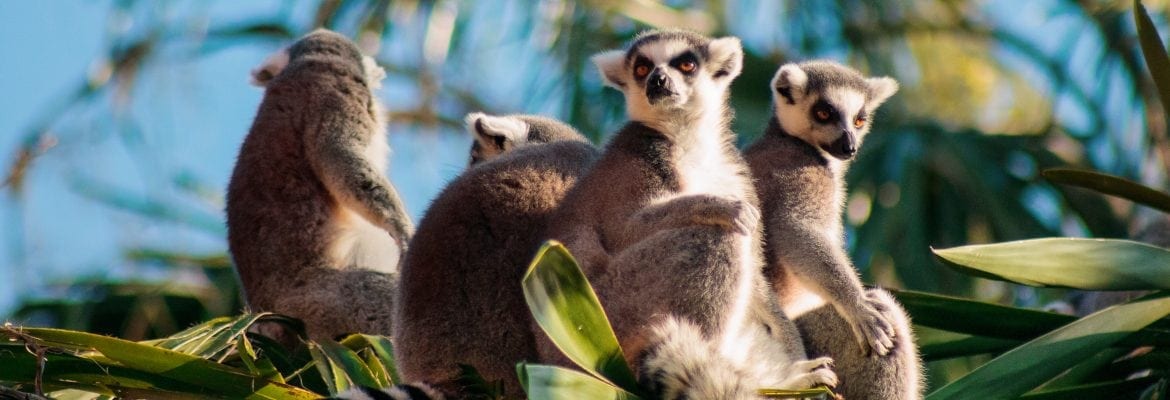
Ring-tailed lemur
Conservation status: IUCN – EN (Endangered); CITES – Appendix I
Geographic range: Madagascar.
Physical description: Ring-tailed lemurs are medium-sized primates. They are not sexually dimorphic so both males and females are generally up to 42,5cm large, weigh between 2,2 and 2,7 kg, and have about 60 cm long tails. Their coats are grey-brown with some white fur on their heads and paws. Their tails are distinctively black with white rings and their eyes and noses are surrounded by brown fur. Their catlike ears are triangular and scent glands near their armpits, wrists, and anal area allow them to mark the trees of their territory. Finally, this lemur species has a specific tooth structure in the mandible, where long, narrow, outwardly projecting teeth are used for coat care.
Biology: Ring-tailed lemur numbers in the wild are rapidly decreasing due to habitat destruction and the black market for exotic animals. However, due to successful breeding programs in captivity, their extinction is not foreseen. During the rutting season, females are fertile for only 24 hours and usually give birth only once per year. For the first two weeks of their life, newborns hold onto their mother’s underbelly, after which they begin to ride on their backs. By five months old, they are fully weaned. Ring-tailed lemurs spend the least amount of time in the trees, compared to other lemur species, although they are still perfectly adapted to do so. They usually walk on four legs, holding their tail upright in a form of a question mark. Ring-tailed lemurs usually live in groups of around 17 individuals called troops, but this can vary from about 5 to 30 depending on the resources available in their territory. The troop has a leading female who begins to exhibit her dominant traits from about 16 months of age. The troop guard their food resources but don’t have strict territorial boundaries. During a fight, a male will use the liquid from his scent glands to cover his tail with scent and then wafts the scent around to ward off other males. The male with the stronger smell wins. In the morning, ring-tailed lemurs tend to sit in a ‘sun salutation pose’ which helps them warm up after the night.
Lifespan: In the wild 15-20 years, in captivity 20-30 years.
Food habits: Mainly fruit, about 25% leaves and 5% flowers and some bark, sap and herbs.